Top 10 AI Video Translation Tools to Reach a Global Audience in 2025
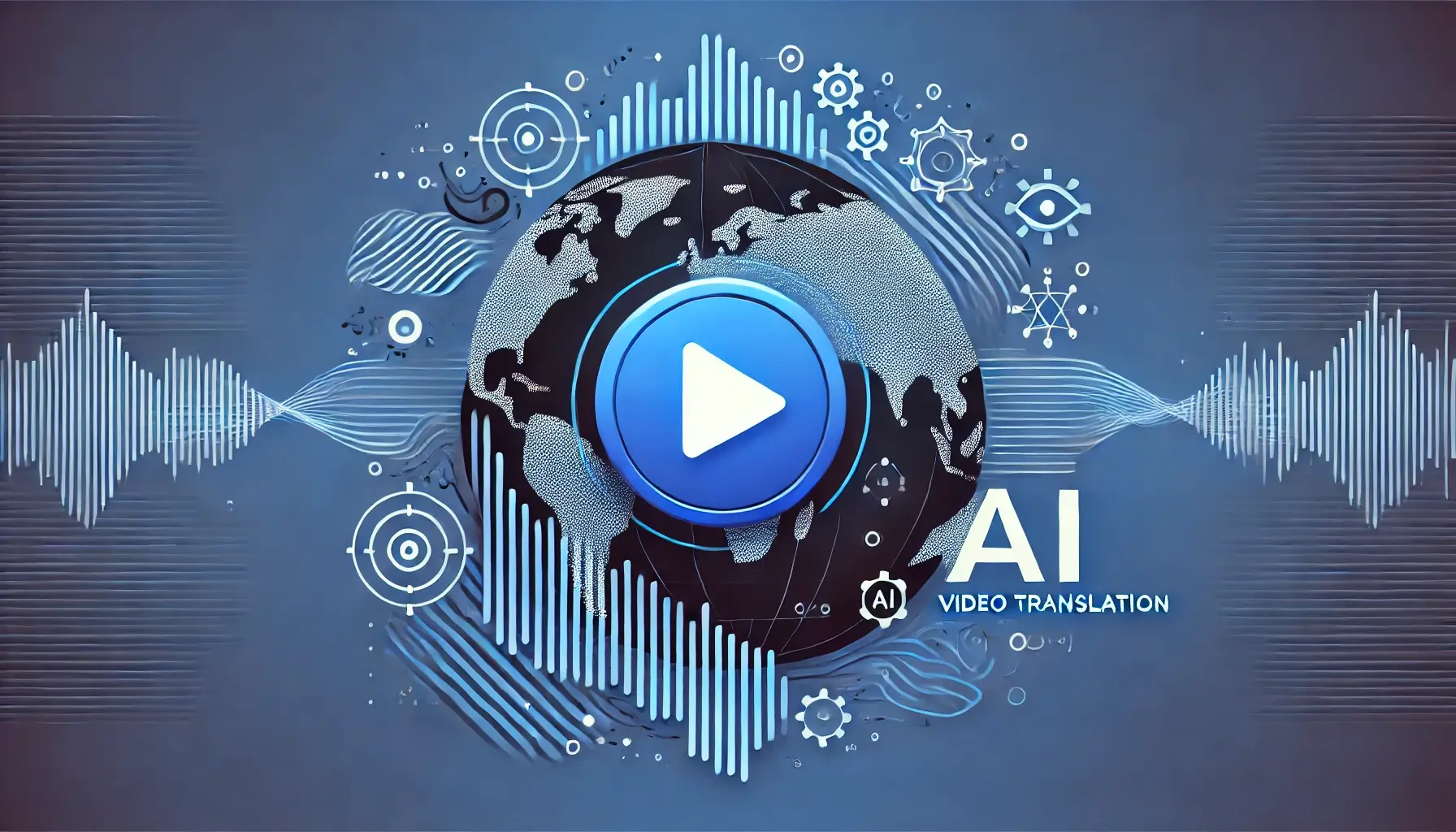
The digital content landscape has undergone a seismic shift in recent years, with video consumption reaching unprecedented heights across global markets. According to recent industry data, over 3.7 billion people worldwide consume video content daily, with 85% of internet users watching videos in languages other than their native tongue [1]. This massive appetite for multilingual content has created both an enormous opportunity and a significant challenge for content creators, businesses, and educators seeking to expand their reach beyond linguistic boundaries.
The traditional approach to video localization has long been a bottleneck for global expansion. Manual dubbing processes can take weeks or months to complete, often costing thousands of dollars per minute of content. Professional voice actors, studio time, and post-production work have made multilingual video content accessible only to organizations with substantial budgets and resources. However, the emergence of artificial intelligence has fundamentally transformed this landscape, democratizing access to high-quality video translation and dubbing capabilities.
AI video translation tools represent one of the most significant technological breakthroughs in content localization, leveraging advanced machine learning algorithms, neural networks, and natural language processing to automatically translate, dub, and synchronize video content across multiple languages. These sophisticated platforms can now clone voices with remarkable accuracy, maintain lip-sync precision, and preserve the emotional nuance of the original speaker while delivering content in dozens of target languages.
The market for AI-powered video translation has exploded, with industry analysts projecting a compound annual growth rate of 23.8% through 2028 [2]. This rapid expansion reflects not only the technological maturation of AI translation capabilities but also the urgent business need for scalable content localization solutions. From Fortune 500 companies expanding into emerging markets to individual content creators building global audiences on platforms like YouTube and TikTok, the demand for accessible, affordable, and high-quality video translation has never been greater.
In this comprehensive analysis, we examine the top 10 AI video translation tools that are reshaping how organizations and creators approach multilingual content strategy in 2025. Each platform offers unique capabilities, pricing models, and technological approaches to solving the complex challenge of cross-linguistic video communication. Our evaluation considers factors including translation accuracy, voice cloning quality, lip-sync precision, language support, ease of use, and overall value proposition to help you identify the best AI tool for video translation that aligns with your specific needs and objectives.
Whether you're a multinational corporation seeking to localize training materials, a digital marketer expanding into international markets, an educator creating accessible content for diverse student populations, or a content creator building a global following, understanding the capabilities and limitations of these AI-powered video language converters is essential for making informed technology decisions that will drive your success in an increasingly connected world.
Understanding AI Video Translation: The Technology Behind the Revolution
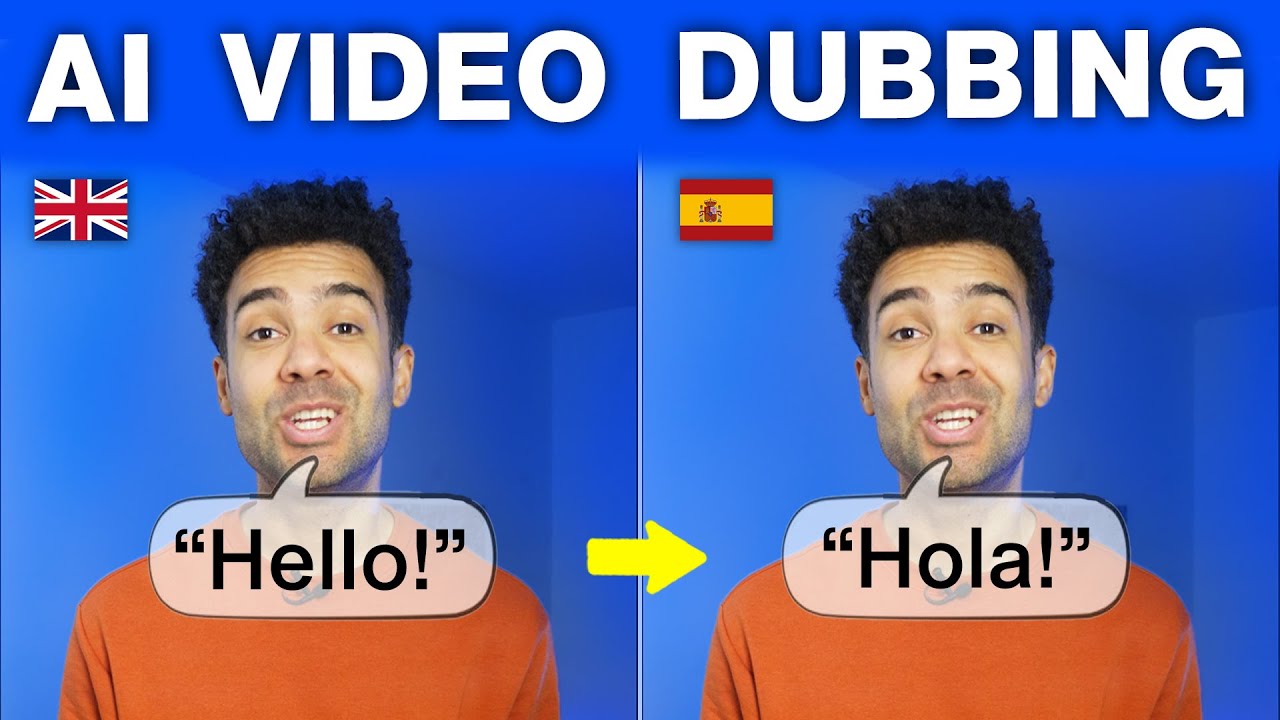
AI video translation represents a convergence of multiple advanced technologies working in harmony to overcome the traditional barriers of multilingual content creation. At its core, an AI video translation tool combines automatic speech recognition (ASR), neural machine translation (NMT), text-to-speech synthesis (TTS), and computer vision algorithms to create a seamless, automated pipeline for converting video content from one language to another while preserving the visual and auditory integrity of the original material.
The process begins with sophisticated automatic speech recognition systems that transcribe the original audio track with remarkable precision. Modern ASR technologies, powered by transformer-based neural networks, can achieve accuracy rates exceeding 95% even in challenging acoustic environments with background noise, multiple speakers, or technical terminology [3]. These systems have been trained on vast datasets encompassing diverse accents, speaking styles, and linguistic variations, enabling them to handle real-world content with unprecedented reliability.
Once the speech has been accurately transcribed, neural machine translation engines take over the linguistic conversion process. Unlike traditional rule-based translation systems, modern NMT models understand context, cultural nuances, and idiomatic expressions, producing translations that maintain the original meaning while adapting to the target language's natural flow and cultural expectations. The most advanced automatic video translation software incorporates specialized models trained on conversational speech patterns, ensuring that translated content sounds natural and engaging rather than mechanical or stilted.
The voice cloning component represents perhaps the most impressive technological achievement in modern AI video translation tools. Using deep learning techniques such as generative adversarial networks (GANs) and variational autoencoders (VAEs), these systems can analyze the unique characteristics of a speaker's voice including pitch, tone, cadence, and emotional expression, then recreate these qualities in the target language. This AI-powered video language converter capability ensures that the translated content maintains the speaker's personality and authenticity, creating a more engaging and trustworthy experience for viewers.
Lip-sync technology adds another layer of sophistication to the translation process. Advanced computer vision algorithms analyze the speaker's facial movements and mouth shapes, then adjust the timing and pacing of the translated audio to maintain visual coherence. Some cutting-edge platforms even employ deepfake-style techniques to subtly modify lip movements, ensuring perfect synchronization between the new audio track and the visual elements of the video.
The integration of these technologies creates a multilingual video translation AI system that can process content at scale while maintaining quality standards that rival traditional human-produced dubbing. Modern platforms can handle multiple speakers within a single video, preserve background music and sound effects, and even adapt cultural references to make content more relevant for target audiences. This technological sophistication has transformed video localization from a luxury available only to major studios into an accessible tool for businesses and creators of all sizes.
Essential Features to Evaluate in AI Video Translation Tools
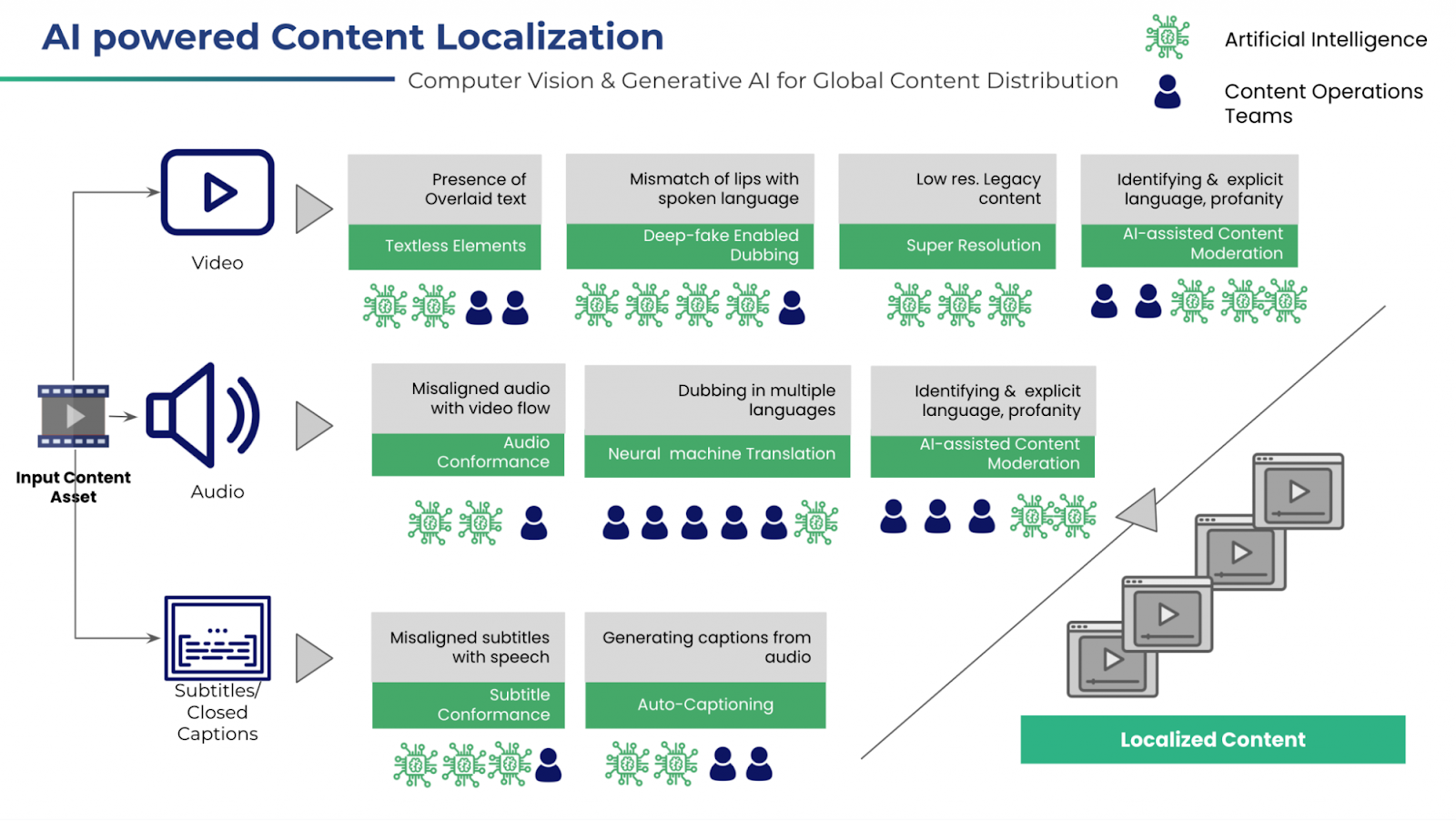
When selecting the best AI tool for video translation, understanding the critical features that differentiate professional-grade platforms from basic offerings is essential for making an informed decision. The rapidly evolving landscape of AI subtitle translation tools and AI dubbing and translation tools presents a wide array of options, each with distinct strengths and limitations that can significantly impact your content localization success.
Translation Accuracy and Natural Language Processing
The foundation of any effective AI video translator online lies in its ability to produce accurate, contextually appropriate translations that preserve the original message's intent and emotional resonance. Advanced platforms employ multiple layers of quality assurance, including confidence scoring algorithms that flag potentially problematic translations for human review. The most sophisticated systems incorporate domain-specific training data, allowing them to handle technical terminology, industry jargon, and specialized vocabulary with greater precision than general-purpose translation engines.
Modern neural machine translation models have achieved remarkable improvements in handling idiomatic expressions, cultural references, and conversational nuances that previously required human intervention. However, accuracy can vary significantly depending on language pairs, with major languages like English, Spanish, French, and German typically achieving higher accuracy rates than less common linguistic combinations. When evaluating platforms, consider requesting sample translations in your specific language pairs and content domains to assess real-world performance.
Voice Cloning Quality and Authenticity
The ability to maintain the original speaker's vocal characteristics while translating to different languages represents a crucial differentiator among AI voiceover and translation for videos platforms. High-quality voice cloning systems analyze multiple acoustic features including fundamental frequency, formant patterns, speaking rhythm, and emotional expression markers to create synthetic voices that closely match the original speaker's unique characteristics.
The most advanced AI tool for multilingual video marketing platforms can capture subtle vocal nuances such as regional accents, professional speaking styles, and personality traits that contribute to speaker authenticity. This capability is particularly important for corporate communications, educational content, and branded materials where maintaining speaker credibility and recognition across languages is essential for audience engagement and trust.
Lip-Sync Precision and Visual Coherence
Real-time AI video translation systems that include lip-sync capabilities represent the cutting edge of video localization technology. These platforms analyze facial movements, mouth shapes, and speaking patterns to ensure that translated audio aligns naturally with the speaker's visual presentation. The most sophisticated systems can achieve frame-accurate synchronization, creating seamless viewing experiences that maintain the illusion of native-language content.
However, lip-sync quality can vary significantly based on video quality, speaker positioning, and the complexity of facial movements. Some platforms offer adjustable synchronization settings, allowing users to prioritize either perfect timing or natural speech flow depending on their specific requirements and audience expectations.
Language Support and Dialect Variations
The breadth and depth of language support varies dramatically across AI video translation platforms, with some focusing on major global languages while others offer extensive coverage of regional dialects and less common linguistic variations. When evaluating options, consider not only the total number of supported languages but also the quality of support for your specific target markets.
Advanced platforms often provide multiple dialect options within major languages, recognizing that Spanish spoken in Mexico differs significantly from Spanish used in Spain or Argentina. This granular approach to language support can significantly impact audience reception and engagement, particularly for content targeting specific regional markets or cultural communities.
Editing Capabilities and Post-Production Control
Professional-grade video content translator using AI platforms provide comprehensive editing tools that allow users to refine translations, adjust timing, and customize output to meet specific quality standards. These capabilities include transcript editing, audio timing adjustments, subtitle formatting options, and the ability to incorporate custom terminology or brand-specific language preferences.
The most sophisticated platforms offer collaborative editing environments where multiple team members can review, comment on, and approve translations before final output. This workflow integration is particularly valuable for organizations with established content approval processes or quality assurance requirements that demand human oversight of AI-generated translations.
Top 10 AI Video Translation Tools for Global Content Success
1. Synthesia: The Professional Standard for AI Video Localization
Synthesia has established itself as the gold standard for professional AI video translation, combining cutting-edge technology with enterprise-grade reliability to serve Fortune 500 companies, educational institutions, and content creators worldwide. The platform's sophisticated approach to multilingual video translation AI sets it apart through its exceptional voice cloning accuracy, precise lip-sync capabilities, and comprehensive language support covering 32+ languages with plans for continued expansion.
The platform's core strength lies in its advanced neural voice synthesis technology, which can capture and replicate the subtle nuances of human speech with remarkable fidelity. Synthesia's voice cloning system analyzes multiple acoustic parameters including pitch variation, speaking rhythm, emotional expression, and even breathing patterns to create synthetic voices that maintain the original speaker's personality and authenticity across different languages. This capability proves particularly valuable for corporate communications, where maintaining executive presence and credibility across global markets is essential for effective messaging.
Synthesia's lip-sync technology represents a significant technological achievement, utilizing computer vision algorithms to analyze facial movements and adjust audio timing for perfect visual coherence. The platform achieves frame-accurate synchronization that creates seamless viewing experiences, making translated content appear as natural as native-language productions. This precision is crucial for professional applications where visual quality and authenticity directly impact audience engagement and message effectiveness.
The platform's editing capabilities provide comprehensive control over the translation process, allowing users to refine transcripts, adjust timing, and customize output to meet specific quality standards. Synthesia's collaborative workflow tools enable team-based review processes, with approval mechanisms and version control features that support enterprise content governance requirements. The platform also offers extensive customization options for subtitle formatting, brand integration, and output specifications that align with various distribution channels and technical requirements.
From a pricing perspective, Synthesia operates on a subscription model starting at $29 per month for basic plans, with dubbing services priced between $0.80 and $1.60 per minute depending on whether lip-sync features are included. While this positions Synthesia at the premium end of the market, the platform's professional-grade output quality and comprehensive feature set justify the investment for organizations requiring high-quality, scalable video localization solutions.
2. HeyGen: Revolutionary Voice Cloning with Global Reach
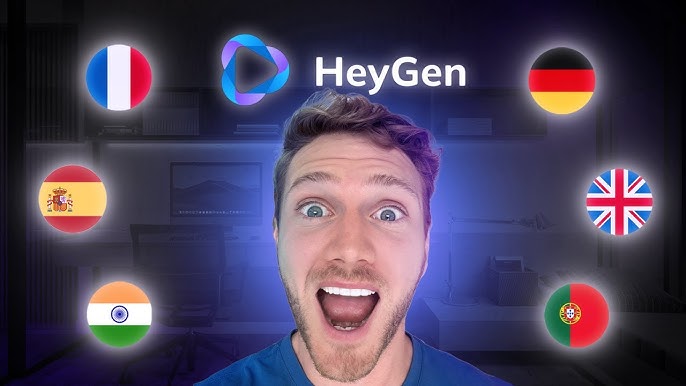
HeyGen has emerged as a formidable competitor in the AI video translation space, distinguished by its exceptional voice cloning technology and support for an impressive 70+ languages and 175+ dialects. The platform's approach to automatic video translation software emphasizes natural language processing and cultural adaptation, making it particularly effective for content creators and businesses seeking to maintain authentic communication across diverse global markets.
The platform's standout feature is its advanced AI-driven voice cloning system, which employs sophisticated machine learning algorithms to analyze and replicate vocal characteristics with unprecedented accuracy. HeyGen's technology can capture subtle elements of speech including regional accents, professional speaking styles, and emotional expression patterns, ensuring that translated content maintains the speaker's unique personality and credibility. This capability proves especially valuable for personal branding, educational content, and corporate communications where speaker authenticity directly impacts audience trust and engagement.
HeyGen's lip-sync technology delivers professional-grade synchronization that aligns seamlessly with the original speaker's visual presentation. The platform's computer vision algorithms analyze facial movements, mouth shapes, and speaking patterns to ensure that translated audio maintains perfect timing with visual elements. This attention to visual coherence creates viewing experiences that feel natural and engaging, avoiding the uncanny valley effect that can undermine audience acceptance of AI-generated content.
One of HeyGen's most innovative features is its social media integration, particularly the X Bot functionality that allows users to translate videos directly through Twitter interactions. This streamlined approach to video localization demonstrates the platform's commitment to accessibility and ease of use, making professional-quality translation capabilities available to content creators regardless of their technical expertise or production resources.
The platform's comprehensive language support extends beyond simple translation to include cultural adaptation and regional customization. HeyGen recognizes that effective global communication requires more than linguistic conversion, incorporating cultural context and regional preferences to ensure that translated content resonates authentically with target audiences. This sophisticated approach to localization makes HeyGen particularly effective for marketing campaigns, educational materials, and branded content targeting specific geographic markets.
HeyGen's pricing structure emphasizes accessibility while maintaining professional quality standards. The platform offers free tier options for basic usage, with scalable pricing plans that accommodate everything from individual content creators to enterprise-level organizations. This flexible approach to pricing makes advanced AI video translation technology accessible to a broader range of users while providing the scalability needed for large-scale content localization projects.
3. Rask AI: Comprehensive Localization with Advanced Features
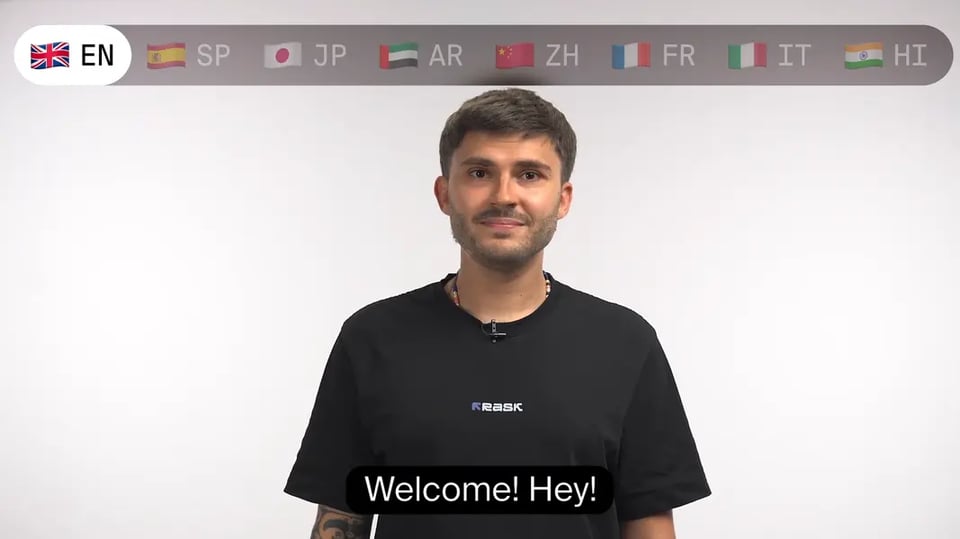
Rask AI has positioned itself as a comprehensive solution for intelligent video localization at scale, offering one of the most extensive language libraries in the industry with support for 135 languages and dialects. The platform's approach to AI dubbing and translation tool functionality emphasizes accuracy, cultural relevance, and professional-grade output quality that meets the demanding requirements of enterprise clients and content creators seeking global reach.
The platform's neural machine translation engine incorporates advanced contextual understanding capabilities that go beyond simple word-for-word conversion to capture meaning, intent, and cultural nuances. Rask AI's translation algorithms have been trained on diverse datasets that include conversational speech patterns, technical terminology, and industry-specific vocabulary, enabling the platform to handle complex content across multiple domains with remarkable accuracy and natural flow.
Rask AI's voice cloning technology represents a significant advancement in synthetic speech generation, utilizing deep learning models that analyze multiple acoustic features to create voices that closely match original speakers. The platform's approach to voice synthesis includes emotional expression modeling, speaking rhythm analysis, and personality trait preservation, ensuring that translated content maintains the speaker's unique characteristics and communication style across different languages.
The platform's lip-sync capabilities operate as a premium add-on feature, providing frame-accurate synchronization for users requiring the highest levels of visual coherence. Rask AI's computer vision algorithms analyze facial movements and mouth shapes to ensure perfect alignment between translated audio and visual elements, creating seamless viewing experiences that maintain professional presentation standards.
One of Rask AI's key differentiators is its comprehensive editing and customization toolkit, which provides users with granular control over translation output. The platform includes advanced transcript editing capabilities, audio timing adjustments, cultural adaptation options, and collaborative review workflows that support team-based content development processes. These features make Rask AI particularly suitable for organizations with established quality assurance procedures and content governance requirements.
The platform's pricing structure reflects its position as a professional-grade solution, with entry-level plans starting at $60 per month and translation services priced at $2.40 per minute for standard dubbing and $3.00 per minute when lip-sync features are included. While this positions Rask AI at the premium end of the market, the platform's extensive language support, advanced features, and professional output quality provide substantial value for organizations requiring comprehensive video localization capabilities.
4. Maestra: Precision-Focused Translation and Transcription
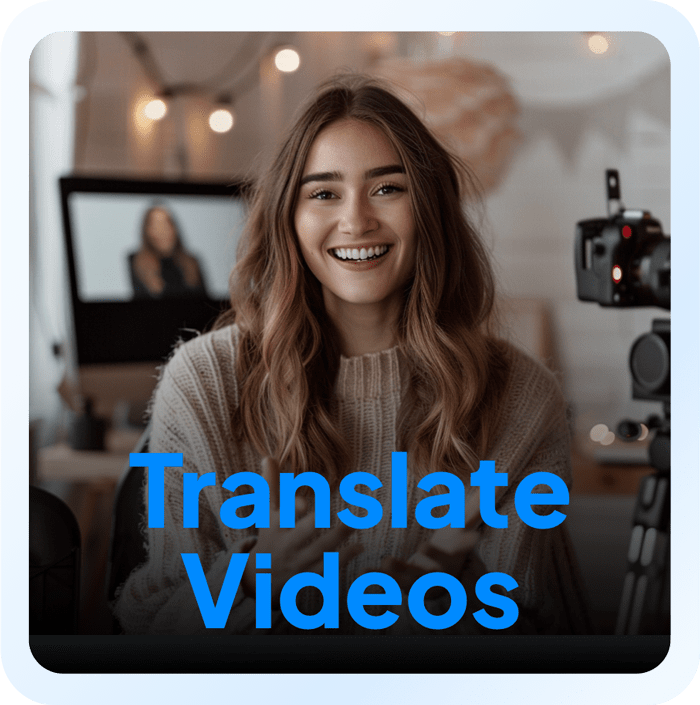
Maestra has carved out a distinctive position in the AI video translation market by focusing on precision, accuracy, and comprehensive subtitle generation capabilities. Supporting over 100 languages, the platform combines advanced automatic speech recognition with sophisticated translation algorithms to deliver high-quality multilingual content that meets professional broadcasting and educational standards.
The platform's core strength lies in its exceptional transcription accuracy, which forms the foundation for all subsequent translation and dubbing processes. Maestra's ASR technology has been trained on diverse audio datasets that include various accents, speaking styles, and acoustic environments, enabling the platform to handle real-world content with remarkable reliability. This transcription precision is particularly valuable for educational content, corporate communications, and media productions where accuracy is paramount.
Maestra's approach to AI subtitle translation tool functionality emphasizes comprehensive subtitle generation with extensive formatting and customization options. The platform provides detailed control over subtitle timing, positioning, styling, and cultural adaptation, allowing users to create professional-quality captions that meet accessibility standards and audience preferences. This attention to subtitle quality makes Maestra particularly suitable for educational institutions, media companies, and organizations with strict accessibility compliance requirements.
The platform's voice cloning capabilities operate as a premium add-on feature, utilizing advanced neural synthesis models to create synthetic voices that maintain speaker characteristics across different languages. While not as extensive as some competitors, Maestra's voice cloning technology focuses on accuracy and natural speech patterns, producing dubbed content that sounds authentic and engaging for target audiences.
Maestra's editing and collaboration tools provide comprehensive workflow support for team-based content development processes. The platform includes version control, approval mechanisms, and collaborative review features that enable multiple stakeholders to participate in the translation and quality assurance process. These capabilities make Maestra particularly valuable for organizations with established content governance procedures and quality control requirements.
From a pricing perspective, Maestra offers competitive rates with subtitle generation starting at $0.17 per minute, dubbing services at $0.33 per minute, and voice cloning capabilities at $2.00 per minute. This tiered pricing structure allows users to select specific features based on their requirements and budget constraints, making professional-quality translation capabilities accessible to a broad range of organizations and content creators.
5. ElevenLabs: Premium Voice Generation Excellence
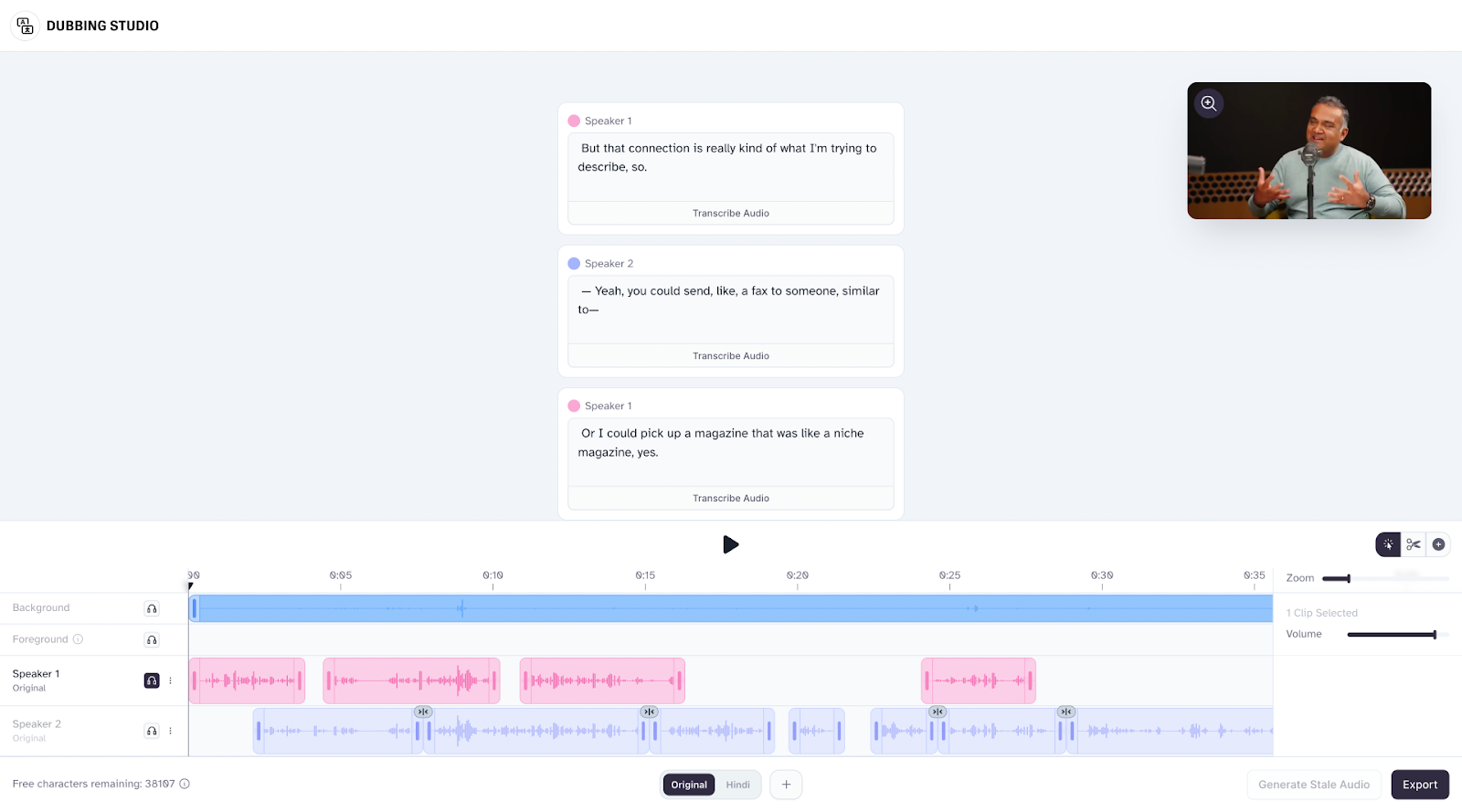
ElevenLabs has established itself as the premier destination for AI voice generation and dubbing, bringing Hollywood-quality voice synthesis technology to the broader market through its sophisticated Dubbing Studio platform. While supporting 29 carefully selected languages that represent major global markets, ElevenLabs prioritizes quality over quantity, delivering voice cloning and dubbing capabilities that rival traditional professional voice acting in terms of emotional expression, naturalness, and authenticity.
The platform's revolutionary approach to voice synthesis utilizes proprietary deep learning models that analyze multiple layers of vocal characteristics including pitch variation, emotional expression, breathing patterns, and speaking rhythm. ElevenLabs' technology can capture subtle nuances such as regional accents, professional speaking styles, and personality traits that contribute to speaker authenticity and audience connection. This sophisticated approach to voice modeling makes ElevenLabs particularly valuable for narrative content, corporate communications, and branded materials where vocal quality directly impacts audience engagement and message effectiveness.
ElevenLabs' Dubbing Studio represents a significant advancement in AI-powered video localization, providing comprehensive tools for professional-quality dubbing production. The platform's workflow includes advanced script editing capabilities, precise timing controls, and extensive customization options that allow users to fine-tune every aspect of the dubbing process. This level of control makes ElevenLabs suitable for high-stakes applications such as film dubbing, corporate presentations, and educational content where production quality standards are paramount.
One of ElevenLabs' key differentiators is its focus on emotional expression and vocal authenticity. The platform's AI models have been trained to understand and replicate the emotional context of speech, ensuring that translated content maintains the original speaker's intended tone and impact. This capability proves particularly valuable for content that relies on emotional connection, such as marketing materials, educational presentations, and personal communications.
The platform's editing and customization capabilities provide extensive control over the dubbing process, including detailed timing adjustments, voice parameter modifications, and cultural adaptation options. ElevenLabs' professional-grade tools enable users to achieve broadcast-quality results while maintaining efficient production workflows that scale to meet enterprise requirements.
ElevenLabs operates on a premium pricing model that reflects its position as a high-quality solution, with creator plans starting at $22 per month and dubbing services priced at approximately $3.67 per minute. While this positions ElevenLabs at the higher end of the market, the platform's exceptional voice quality and professional-grade features provide substantial value for organizations and creators requiring the highest standards of audio production.
6. Virbo (Wondershare): Accessible AI Translation with Comprehensive Features
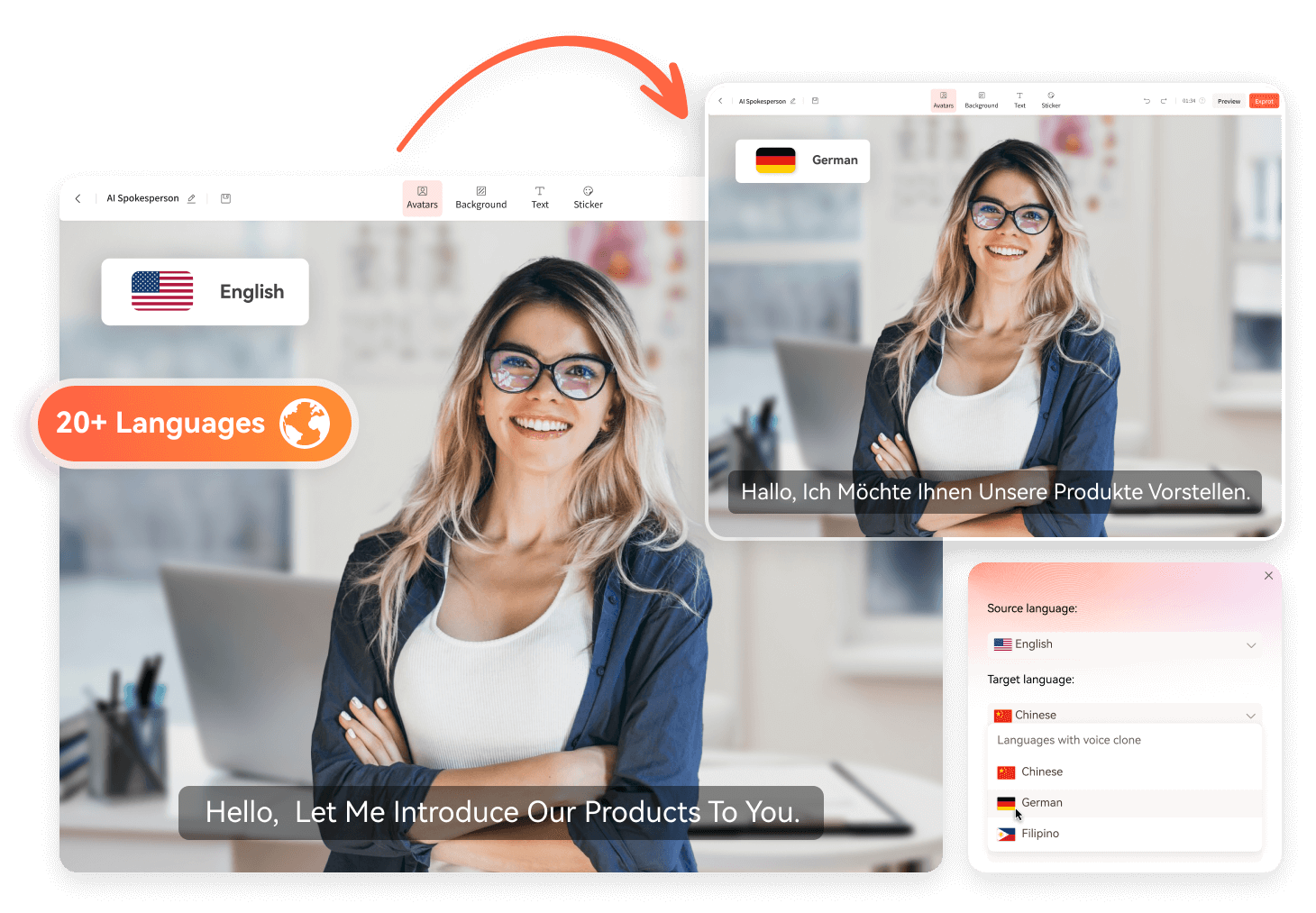
Wondershare Virbo has emerged as a comprehensive AI video translation solution that balances advanced technology with user accessibility, supporting over 40 languages with an impressive 99.13% accuracy rate. The platform's approach to automatic video translation software emphasizes ease of use without compromising on professional quality, making sophisticated video localization capabilities accessible to businesses and creators regardless of their technical expertise or production experience.
Virbo's core technology stack combines advanced automatic speech recognition, neural machine translation, and sophisticated voice synthesis to create a seamless translation pipeline that handles multiple aspects of video localization simultaneously. The platform's AI algorithms have been trained on diverse datasets that include conversational speech patterns, technical terminology, and cultural variations, enabling accurate translation across multiple content domains and communication styles.
The platform's voice cloning technology utilizes advanced neural synthesis models to create realistic AI-generated voices that maintain speaker characteristics across different languages. Virbo's approach to voice modeling includes emotional expression analysis, speaking rhythm preservation, and personality trait maintenance, ensuring that translated content retains the original speaker's authenticity and communication effectiveness. This capability proves particularly valuable for corporate communications, educational content, and branded materials where speaker credibility is essential for audience engagement.
Virbo's lip-sync capabilities represent a significant technological achievement, utilizing computer vision algorithms to analyze facial movements and adjust audio timing for optimal visual coherence. While currently in beta, the platform's lip-sync technology demonstrates impressive accuracy in maintaining synchronization between translated audio and visual elements, creating natural viewing experiences that enhance audience acceptance and engagement.
One of Virbo's key strengths is its comprehensive file format support and flexible output options. The platform accepts MP4 and MOV files ranging from 5 seconds to 5 minutes in duration, with file size limits up to 500MB that accommodate most standard video content. Virbo also provides extensive subtitle export capabilities, including SRT file generation that enables users to leverage translated content across multiple platforms and distribution channels.
The platform's editing and customization tools provide users with significant control over the translation process, including transcript editing, timing adjustments, and cultural adaptation options. Virbo's user-friendly interface makes these advanced features accessible to non-technical users while providing the depth of functionality required for professional applications.
Virbo's pricing strategy emphasizes affordability and accessibility, with budget-friendly plans that make professional-quality AI video translation available to small businesses, educators, and individual content creators. The platform offers free tier options for basic usage, with scalable pricing that accommodates growing needs without requiring significant upfront investment.
7. Vozo AI: Advanced Translation with Intelligent Features
Vozo AI has distinguished itself in the competitive AI video translation market through its comprehensive support for 110+ languages and dialects, combined with advanced artificial intelligence features that go beyond basic translation to provide intelligent content optimization and cultural adaptation. The platform's sophisticated approach to multilingual video translation AI incorporates contextual understanding, tone matching, and cultural relevance to deliver translations that truly resonate with target audiences.
The platform's core translation engine utilizes advanced neural machine translation models that understand context, cultural nuances, and communication intent rather than simply converting words between languages. Vozo's AI algorithms analyze the broader context of conversations, including cultural references, idiomatic expressions, and regional communication styles, to produce translations that sound natural and authentic to native speakers. This sophisticated approach to language processing makes Vozo particularly effective for marketing content, educational materials, and corporate communications where cultural sensitivity and audience connection are paramount.
Vozo's voice cloning technology, powered by the proprietary VoiceREAL™ system, represents a significant advancement in synthetic speech generation. The platform's AI models analyze multiple acoustic parameters including pitch variation, emotional expression, speaking rhythm, and personality traits to create synthetic voices that closely match original speakers. This technology proves particularly valuable for maintaining speaker authenticity across different languages while preserving the emotional impact and communication effectiveness of the original content.
The platform's LipREAL™ technology provides advanced lip-sync capabilities that ensure perfect alignment between translated audio and visual elements. Vozo's computer vision algorithms analyze facial movements, mouth shapes, and speaking patterns to create seamless synchronization that maintains natural viewing experiences. This attention to visual coherence is crucial for professional applications where audience acceptance and engagement depend on authentic presentation quality.
One of Vozo's most innovative features is its AI Pilot system, which provides intelligent suggestions and optimizations throughout the translation process. This advanced AI assistant can recommend cultural adaptations, suggest alternative phrasings for better audience resonance, and identify potential issues before they impact final output quality. The AI Pilot functionality demonstrates Vozo's commitment to leveraging artificial intelligence not just for translation but for comprehensive content optimization.
Vozo's collaborative features include Team Workspace functionality that enables multiple stakeholders to participate in the translation and review process. The platform provides comprehensive project management tools, version control capabilities, and approval workflows that support enterprise content governance requirements. Additionally, Vozo's Glossary feature allows organizations to maintain consistent terminology and brand language across all translated content.
The platform's pricing structure reflects its position as a professional-grade solution with advanced AI capabilities, though specific pricing details are typically provided through custom quotations based on usage requirements and feature selections. This approach allows Vozo to accommodate diverse organizational needs while providing the flexibility required for large-scale content localization projects.
8. Kapwing: Creator-Focused Translation with Collaborative Features
Kapwing has established itself as a creator-centric platform that combines AI video translation capabilities with comprehensive video editing tools, supporting 70 languages while maintaining a focus on accessibility, ease of use, and collaborative content creation. The platform's approach to AI tool for multilingual video marketing emphasizes streamlined workflows and intuitive interfaces that make professional-quality video localization accessible to content creators, social media managers, and small businesses without extensive technical expertise.
The platform's translation engine utilizes modern neural machine translation models that provide decent accuracy for most content types, though users should expect some variation in quality depending on language pairs and content complexity. Kapwing's strength lies not in cutting-edge translation technology but in its ability to integrate translation capabilities seamlessly with broader video editing workflows, allowing creators to handle multiple aspects of content production within a single platform environment.
Kapwing's voice cloning capabilities are available exclusively through Business and Enterprise plans, utilizing AI synthesis models to create dubbed versions of translated content. While not as sophisticated as specialized voice cloning platforms, Kapwing's dubbing features provide adequate quality for social media content, marketing materials, and educational videos where perfect voice matching is less critical than overall production efficiency and cost-effectiveness.
The platform's collaborative features represent one of its key differentiators, providing comprehensive tools for team-based content creation and review processes. Kapwing's workflow includes real-time collaboration capabilities, comment systems, approval mechanisms, and version control features that enable multiple stakeholders to participate in the translation and editing process. These collaborative tools make Kapwing particularly valuable for marketing teams, educational institutions, and content agencies that require coordinated production workflows.
Kapwing's editing capabilities extend far beyond translation to include comprehensive video editing tools such as trimming, transitions, effects, and subtitle formatting. This integrated approach allows users to handle translation, editing, and post-production within a single platform, reducing complexity and improving production efficiency for creators who need to manage multiple aspects of video content development.
The platform's pricing structure emphasizes accessibility and value, with Pro plans starting at $24 per month and translation services priced at an extremely competitive $0.08 per minute. This pricing model makes Kapwing one of the most cost-effective options in the market, particularly for creators and small businesses that need basic translation capabilities without premium features like advanced voice cloning or lip-sync technology.
9. Veed: Streamlined Translation for Content Creators
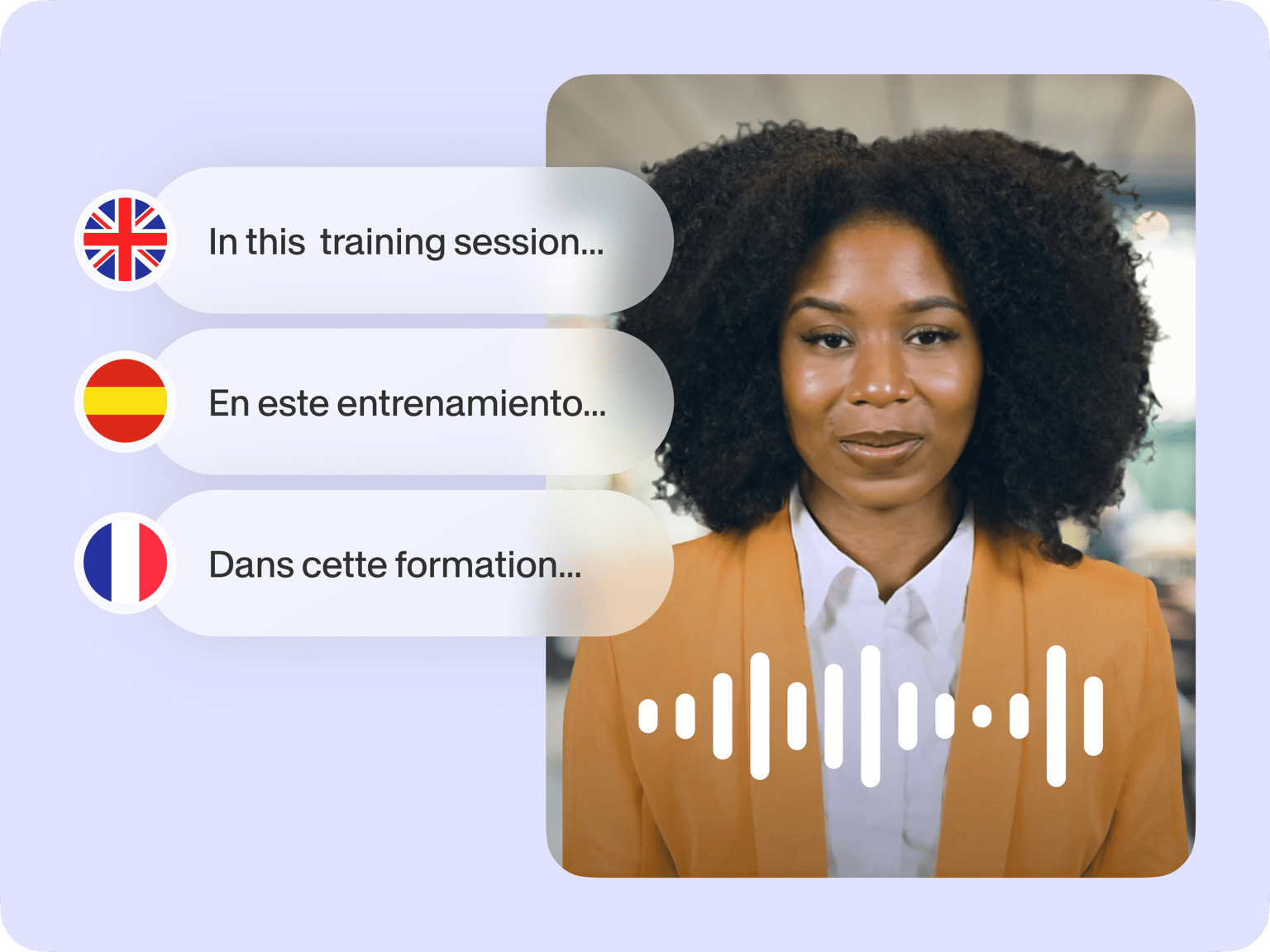
Veed has positioned itself as a user-friendly platform that prioritizes simplicity and accessibility in AI video translation, supporting over 100 languages while maintaining focus on ease of use and quick turnaround times. The platform's approach to video content translator using AI emphasizes streamlined workflows and intuitive interfaces that make video localization accessible to content creators, educators, and small businesses without requiring extensive technical knowledge or production experience.
The platform's automatic speech recognition and translation capabilities provide reliable accuracy for most standard content types, with particular strength in handling clear speech and well-produced audio. Veed's ASR technology performs well with various accents and speaking styles, though users may need to review and edit transcripts for technical terminology or specialized vocabulary to ensure optimal translation quality.
Veed's approach to voice generation utilizes stock AI voices rather than advanced voice cloning technology, which limits the platform's ability to maintain original speaker characteristics across different languages. While this approach reduces costs and complexity, it may result in dubbed content that sounds less authentic compared to platforms with sophisticated voice cloning capabilities. However, for many applications such as educational content, social media videos, and basic corporate communications, Veed's stock voice options provide adequate quality and natural speech patterns.
The platform's editing tools provide comprehensive control over subtitle appearance, timing, and formatting, allowing users to create professional-quality captions that meet accessibility standards and audience preferences. Veed's subtitle editor includes extensive customization options for font selection, positioning, styling, and cultural adaptation, making it suitable for content that requires specific branding or accessibility compliance.
One of Veed's key strengths is its intuitive interface and streamlined workflow design, which enables users to complete translation projects quickly without extensive learning curves or technical training. The platform's user experience emphasizes efficiency and simplicity, making it particularly suitable for content creators who need to process multiple videos regularly without investing significant time in complex editing procedures.
Veed's pricing structure reflects its position as a mid-market solution, with Pro plans starting at $55 per month for subtitle and voice translation capabilities. However, the platform's annual limits of only 4 hours of translation may restrict its suitability for high-volume users, resulting in an effective rate of approximately $2.75 per minute for regular usage patterns.
10. Flixier: Browser-Based Translation with Comprehensive Features
Flixier has distinguished itself as a comprehensive browser-based video editing platform that incorporates advanced AI dubbing and translation capabilities, supporting over 130 languages and dialects while maintaining focus on accessibility, speed, and professional-quality output. The platform's approach to translate video content with AI emphasizes cloud-based processing and intuitive workflows that make sophisticated video localization capabilities accessible to users regardless of their device specifications or technical expertise.
The platform's core strength lies in its comprehensive integration of translation capabilities with full-featured video editing tools, allowing users to handle transcription, translation, dubbing, subtitle generation, and post-production within a single browser-based environment. Flixier's cloud processing architecture ensures consistent performance across different devices and operating systems, eliminating the hardware limitations that often constrain desktop-based video editing applications.
Flixier's AI dubbing technology utilizes advanced text-to-speech synthesis models that provide natural-sounding voice generation across multiple languages and accents. The platform offers over 100 AI voices with customizable speech rate and audio specifications, allowing users to select voices that best match their content requirements and audience preferences. While not offering advanced voice cloning capabilities, Flixier's voice selection provides adequate variety and quality for most professional applications.
The platform's automatic subtitle generation and translation capabilities demonstrate impressive accuracy across diverse content types and language pairs. Flixier's ASR technology handles various accents, speaking styles, and audio quality levels effectively, producing transcripts that require minimal editing for most standard applications. The platform's subtitle editor provides comprehensive formatting and timing controls that enable users to create professional-quality captions that meet accessibility standards and branding requirements.
One of Flixier's key innovations is its seamless integration with major social media platforms and cloud storage services, enabling users to import content from various sources and publish directly to YouTube, Instagram, TikTok, and other platforms without additional export steps. This streamlined workflow makes Flixier particularly valuable for social media managers, content creators, and marketing teams that need to manage content across multiple distribution channels efficiently.
Flixier's collaborative features include real-time feedback systems, project sharing capabilities, and team workspace functionality that enables multiple stakeholders to participate in the translation and editing process. These collaborative tools make Flixier suitable for organizations with distributed teams or complex approval workflows that require coordinated content development processes.
The platform's pricing structure emphasizes accessibility and scalability, with various plan options that accommodate different usage levels and feature requirements. Flixier's browser-based architecture eliminates the need for expensive hardware or software installations, making professional-quality video translation capabilities accessible to organizations and creators with limited technical resources or budget constraints.
Comparative Analysis and Strategic Recommendations
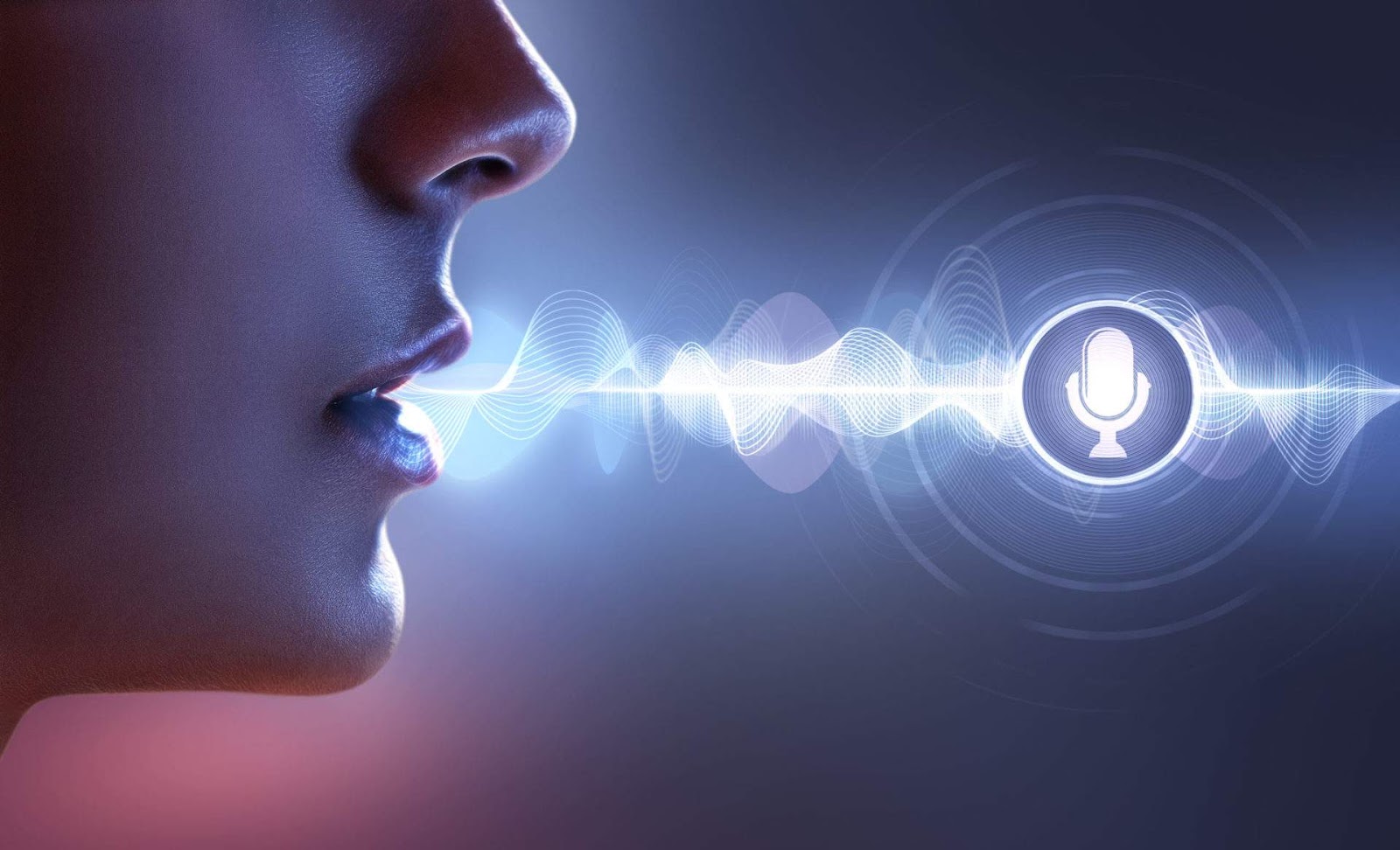
The landscape of AI video translation tools presents a diverse array of options, each optimized for different use cases, budget constraints, and quality requirements. Understanding how these platforms compare across key performance metrics enables organizations and creators to make informed decisions that align with their specific objectives and operational constraints.
For Enterprise and Professional Applications
Organizations requiring the highest quality standards and comprehensive feature sets should prioritize Synthesia, ElevenLabs, and Rask AI. These platforms offer advanced voice cloning capabilities, precise lip-sync technology, and professional-grade editing tools that meet the demanding requirements of corporate communications, educational content, and branded materials. While these solutions command premium pricing, their superior output quality and extensive customization options provide substantial value for applications where authenticity and professionalism are paramount.
For Content Creators and Social Media
Individual creators and small businesses focused on social media content and digital marketing should consider HeyGen, Virbo, and Kapwing. These platforms balance advanced AI capabilities with user-friendly interfaces and accessible pricing models, making professional-quality video translation achievable without significant technical expertise or budget investment. Their streamlined workflows and social media integrations optimize production efficiency for high-volume content creation.
For Budget-Conscious Applications
Organizations with limited budgets or basic translation requirements may find adequate solutions in Veed, Flixier, and Kapwing's entry-level offerings. While these platforms may not provide the most advanced voice cloning or lip-sync capabilities, they deliver reliable translation and dubbing services that meet the needs of educational content, internal communications, and basic marketing materials.
Language Support Considerations
The breadth of language support varies significantly across platforms, with Rask AI leading at 135 languages, followed by Flixier's 130+ languages and Vozo's 110+ languages. Organizations targeting diverse global markets should prioritize platforms with extensive language libraries and strong support for their specific target regions and dialects.
The Future of AI Video Translation Technology
The trajectory of AI video translation technology points toward increasingly sophisticated capabilities that will further democratize global content creation while raising new questions about authenticity, ethics, and cultural sensitivity. Several key trends are shaping the evolution of this rapidly advancing field.
Real-Time Translation Capabilities
The development of real-time AI video translation represents the next frontier in multilingual communication technology. Advanced platforms are beginning to demonstrate live translation capabilities that can process and dub video content with minimal latency, opening possibilities for live streaming, video conferencing, and interactive content that transcends language barriers in real-time. This technology will prove particularly transformative for educational applications, international business communications, and live entertainment content.
Enhanced Cultural Adaptation
Future AI video translation systems will incorporate more sophisticated cultural intelligence, going beyond linguistic conversion to adapt content for cultural context, regional preferences, and local communication styles. This evolution will include automatic adjustment of visual elements, cultural references, and communication patterns to ensure that translated content resonates authentically with target audiences across different cultural contexts.
Improved Emotional Intelligence
The next generation of AI dubbing and translation tools will demonstrate enhanced emotional intelligence, better understanding and replicating the subtle emotional nuances that contribute to effective human communication. These systems will analyze not just vocal characteristics but also facial expressions, body language, and contextual cues to create more authentic and emotionally resonant translated content.
Integration with Emerging Technologies
AI video translation will increasingly integrate with other emerging technologies including virtual reality, augmented reality, and immersive media formats. This convergence will enable new forms of multilingual content experiences that maintain authenticity and engagement across different technological platforms and interaction modalities.
Conclusion: Choosing Your Path to Global Content Success
The revolution in AI video translation technology has fundamentally transformed the landscape of global content creation, making sophisticated multilingual communication capabilities accessible to organizations and creators of all sizes. The ten platforms examined in this comprehensive analysis represent the current state of the art in automatic video translation software, each offering unique strengths and capabilities that address different aspects of the content localization challenge.
The decision of which AI video translation tool to adopt depends on a careful evaluation of your specific requirements, including quality standards, budget constraints, language needs, and technical capabilities. Organizations requiring the highest levels of authenticity and professional quality should invest in premium platforms like Synthesia, ElevenLabs, or Rask AI, which offer advanced voice cloning, precise lip-sync technology, and comprehensive editing capabilities. Content creators and small businesses may find optimal value in platforms like HeyGen, Virbo, or Kapwing, which balance advanced AI capabilities with accessible pricing and user-friendly interfaces.
The rapid pace of technological advancement in this field suggests that today's leading platforms will continue to evolve and improve, with new capabilities emerging regularly. Organizations should consider not only current feature sets but also the development trajectory and innovation capacity of their chosen platform to ensure long-term alignment with evolving needs and opportunities.
As AI video translation technology continues to mature, the barriers to global content creation will continue to diminish, enabling more organizations and creators to reach international audiences with authentic, engaging, and culturally relevant content. The platforms and technologies examined in this analysis represent powerful tools for breaking down linguistic barriers and building connections across the global digital landscape.
The future of content creation is inherently multilingual, and the organizations that embrace these AI-powered translation capabilities today will be best positioned to thrive in an increasingly connected and diverse digital ecosystem. Whether you're expanding into new markets, educating global audiences, or building international communities, the right AI video translation tool can transform your content strategy and unlock new possibilities for growth and engagement.
